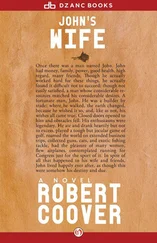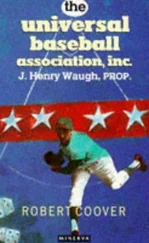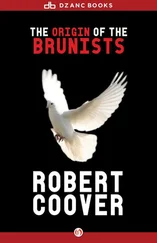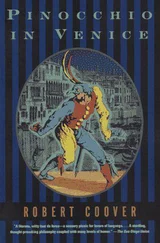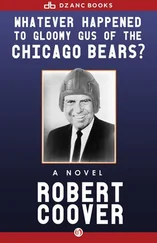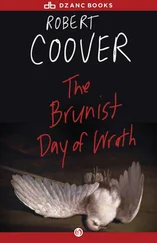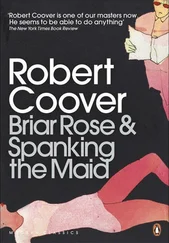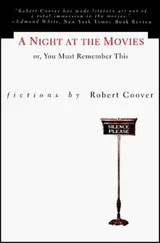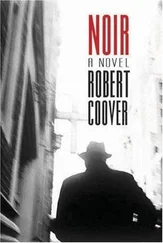While Walt sits in the Whale’s mouth, studying the Death House set and dreaming up further novelties, and Matty Burke burns down Professor Jarrod’s wax museum to collect the fire insurance (“All you have to do is strike a match and the thing is done!” he chortles), New York State Troopers deploy themselves in a concentric series of barricades and roadblocks to defend the Square against protest marches. Commissioner George Monaghan puts his city cops on alert, and all precinct captains and detective squads are ordered to remain on duty through midnight. Newsreel cameramen move cameras and klieg lights into position, and TV generator trucks are brought in before the thickening crowds make it impossible. A concert is arranged up in Central Park — the Goldman Band opening their thirty-sixth season with Honegger’s “March on the Bastille”—to take, up part of the overflow; indeed, the crowds are already pushing north into the Park, east and west toward the rivers, south to Macy’s, which is jammed to the walls this afternoon with shoppers seeking those novel “Dr. T Caps” with five rubbery fingers sticking up on top, inspired by the new Dr. Seuss movie premiering this afternoon at the Criterion. These caps are the occasion among the boys for a lot of wisecracks and naughty monkey business, all of which causes the girls to groan and shake their ponytails and snigger conspiratorially amongst themselves, fanning themselves with movie magazines and shaking their skirts out: my, but it’s hot! The boys agree, but that’s how they like it. They don’t know exactly what’s going to happen tonight, but all squeezed up like this, they can hardly wait. They’ve got knuckledusters and cherry bombs in their pockets, carry signs that read TWO FRIED ROSENBERGERS COMING RIGHT UP! and IF YOU CAN’T STAND THE HEAT, GET OUT OF THE KITCHEN!
Which is just what the House of Wax heroine Sue Allen (Phyllis Kirk) would like to do…but not a chance. She has been stripped naked by Professor Jarrod and is about to be plunged into a bath of boiling wax: “There is a pain beyond pain, my dear, an agony so intense it shocks the mind!” Jarrod knows what he’s talking about. When his partner set fire to the wax museum, he tried to save his beautiful creations and was horribly mutilated in the conflagration: his flesh was literally melted. So much for idealism. Unable to use his hands after, he conceived the idea of murdering his models and fixing them in a wax bath, and it’s now his heart’s desire to metamorphose Sue into Marie Antoinette. Her boyfriend, unwaxed, is out cold with his head in a guillotine and is about to get sliced like Globaloney by the Professor’s mad-freak assistant. The cops arrive and break it up, but not before enjoying a stupendous brawl in Natural Vision 3-D in which everything but Sue’s pudicity gets thrown out at the audience. It’s as though, without this moment of unmitigated whoopee in the last reel, it would all be for nothing. Finally, of course, Sue and her boyfriend are rescued as they must be, Professor Jarrod himself perishes in his tub of hot wax, and his crazy assistant gets busted. Lieutenant Brennan (Frank Love-joy) picks up a sculpted head of Jarrod’s assistant and remarks with a wry grin to a fellow cop: “Ya know, Shane, by the time that guy gets outa Sing Sing, this head will grow a long beard!”
The movie lets out and the people pour out onto the street, moving as one aroused body toward Times Square. The sun’s at its hottest, and they gasp for air after the refrigerated atmosphere of the Trans-Lux. One man, still somewhat possessed by the images of famous historical persons going up in flames, their waxy faces melting horrifically, their stiffened bodies crashing forward into his lap, is disoriented by this new swirl of pictures out in the street. Sometimes he staggers forward, sometimes he gets turned around and pushed backwards. It doesn’t help that he has forgotten to remove his 3-D glasses with the cardboard frames, and so sees everything through the eye-straining H-Polarizer haze of alcohol and iodine. He gets swept along in the rush, spinning and stumbling, feeling like Vincent Price lurching about out of his wheelchair. He has had no difficulty in bringing the two film images together in the theater, and in fact he still has an ache in his forehead and the back of his neck from trying not to flinch when the fellow with the bat and ball started whacking the thing right between his eyes, but now, tumbling along out here on the street, he seems to see two separate and unassimilable pictures, each curiously colored. Everything is flat, distances are deceptive, and he keeps crashing into people, getting angry wary stares in reply. An elbow, while remaining very plainly at least eight theater rows out in front of him, nevertheless hits him in the nose. He feels like he’s grown a beard from his forehead down. Somewhere Julius LaRosa is singing “Anywhere I Wander,” and he wonders if it’s possible after all that the world is turned by some malevolent design.
The scene to the right now seems to show a street with laughing shouting people, and the sound track confirms this; the scene to the left, a long row of buildings with large doors and display windows full of flashing reflections. He leans to the left — but he is again deceived: he stumbles off an unexpected curb into the mob’s path: now I’m John Wilkes Booth slumping forward on melting ankles, he thinks, attracting more attention for some reason than usual and worried about his inability to get his own extremities and the feet pounding over them into the same picture. He crawls hand over hand through the stampede, recalling that moment, early in the picture, when the wax museum is ablaze, waxen heads are melting and tilting bizarrely onto collapsing shoulders, glass eyeballs are bulging and falling out, fingernails are dripping, and Vincent Price is dragging himself painfully across the floor in all the fiery havoc, past a little sign that reads MOTHER LOVE. And then the whole room explodes, strewing the audience with burning debris. He reaches, his clothes smoking, feeling like one molten in the furnace, hit by the winged shaft of fate, and run over on the tracks of history, a curb: he pulls himself up over it and presses on until he smacks up against a building which wasn’t in either of his lenses, but which now appears in the right one. He slumps there briefly, thinking: God has not favored my undertakings, my condition is not fundamentally sound.
He stands when he’s able, and, leaning to the left, brushing the wall with his shoulder so as not to fall back into the crowd again, moves on down the street. He assumes a very serious and meditative expression so that people will not think him drunk, and does his best to walk along like any normal self-confident American, while still keeping contact with the buildings by way of his left shoulder. Thumping along like that, shredding the padding from the shoulder of his New Look sport jacket and thinking about the heroine in the movie out on the foggy streets, pursued by the artist-monster, he stumbles upon a shop selling fresh fruit and vegetables. Since he seems to be inside the shop, he buys six golden oranges, remarking in a friendly manner that they are as big as grapefruit. The fruiterer stares at him curiously, perhaps in part because he now seems to be standing in a box of ripe tomatoes, and says: “Those are grapefruit, Mac!” People stare at him as though his brow were branded with marks of guilt. He is reminded of the guillotine in House of Wax —CRASH! — and concludes, as he pays for the grapefruit and tomatoes, I must be the nice guy who always finishes last.
He’s about to exit by way of a plate-glass window when the fruiterer collars him and pushes him brusquely out what is probably the door, plunging him reeling back into the heart of the maelstrom, past a newsstand where, grasping for support, he acquires some newspapers and magazines, and then, though this is not exactly his intention, on into a subway entrance. He tumbles, clutching newspapers and grapefruit, down the stairs, one lens showing him an advertisement of Dangerous When Wet with Esther Williams in a swimsuit, a moustache under her nose and a Ulysses S. Grant beard between her legs, the other a time-lapse overview of traffic patterns on the subway platform. At the bottom, pausing to wonder if “the Balance of Terror” is a communicable disease which he’s somehow caught, he tries to locate himself — without success — in a gum-machine mirror. All he sees there is Abraham Lincoln with his beard on fire. A train pulls in, arriving from separate directions in the two lenses, and he allows himself to be swept aboard by the crowd. Or perhaps he wishes to take the train, he can’t be sure. He finds an empty seat, but when he sits down it isn’t there. The bottom of his paper bag splits open and the grapefruit roll about on the floor. He tries to pick them up but they’re never just where or what they seem to be. Sometimes they change color before his very eyes, turn into people’s feet which kick him or step on his hands, roll out opening doors at one stop and back in the next. What am I doing down here on the floor of this subway train, he asks himself, chasing grapefruit? I don’t even like grapefruit! He stands and proceeds nonchalantly to read his newspapers and magazines, disowning the grapefruit, as the train rocks along. Through one eye he learns that President Eisenhower has encouraged the reading of Marx and Stalin and a mad artist-professor in Rome has discovered the tomb of Saint Peter, and through the other reads about a plot to liquidate Senator McCarthy. Liquidate! Perhaps they hoped to use his body as a model for Joan of Arc. There are articles, severally, about electrocutions, creeping socialism, frozen bull semen, and “The Night Love Turned to Error.” “Terror,” rather. He cannot seem to focus on the atom-spy news, but keeps getting a composite picture of the two spies: a small dark woman with gold-rimmed spectacles, moustache, and fake fur collar, who for some odd reason reminds him of Marie Antoinette in a black string tie, going up in oily smoke. It must be the circles around the eyes, the gold rims. The coat, he observes, is a good Republican cloth coat, the Brooklyn Dodgers T-shirt underneath notwithstanding.
Читать дальше

